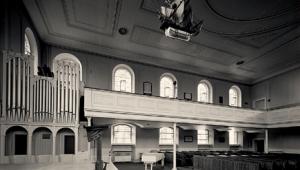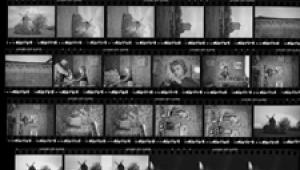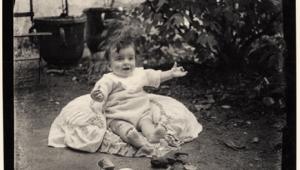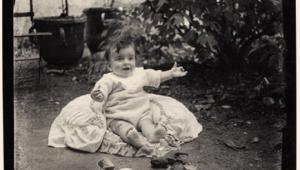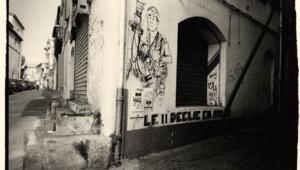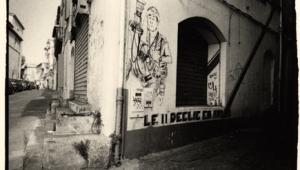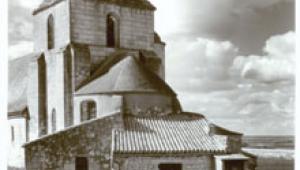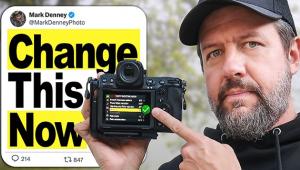Sanctuary; The Calm Pleasures Of A Traditional Darkroom
Leonard Bernstein's Mass is the next thing I want to buy for my darkroom. It might seem an odd choice, but for me the darkroom is not only a place of work: it is also a place of sanctuary. We quite often get letters from people who are returning to the wet darkroom, or are setting one up for the first time. What is the appeal? After all, you can now just sit down in front of a computer screen. You can process your photos anywhere. Life goes on around you: TV playing, family demands, phone calls, interruptions. And maybe that's the reason why people like the darkroom.
 |
|
|
It is a quiet place. No one can disturb you if you are "blacked-out."
It is you and your art: nothing else. It is a place where you can really concentrate
on what you are trying to convey in the picture. What is more, you are in full
control of the environment.
Setting up your sanctuary-in-the-dark isn't that difficult either. It
is best if you can dedicate a space to it, but it is not actually necessary.
A small second bathroom can often be transformed in a matter of minutes to a
perfectly good darkroom. For details, see Shutterbug's July 2001 issue
for my article "Blackout: Darkroom in a Pinch."
If you don't have the gear now, or if you've dusted some off and
find it too worn for good use, check out these sources for darkroom equipment:
Shutterbug ads: Adorama, B&H, and Calumet almost always
have comprehensive listings of darkroom equipment. Delta 1 makes sinks and sells
water filtration systems.
Look for other ads and check Shutterbug's classified ads, too.
Websites: One advertiser, www.midwestphoto.com
has lots of used equipment. An advanced Google search "darkroom, equipment,
U.S.A." will yield a veritable treasure trove.
For darkroom construction search "darkroom, construction." I stopped
looking at page 85. There are books, magazine articles, anecdotes, plans, and
more.
Camera fairs: A great source for used darkroom equipment. Check
the Shutterbug listings. Swap meets and garage sales are also a good place to
look.
Join a camera club: Meeting like-minded people can be a great
source of inspiration and information. Often people there are updating or changing
direction and want to sell off their existing equipment. Occasionally you will
find someone who will give darkroom equipment away: "free to a good home."
Online auctions: I personally don't go in for these because I
have heard too many stories about unscrupulous sellers. But I may be being overly
cautious. Most are probably perfectly OK. But as always, let the buyer beware.
One of the very best things about having your own darkroom is that it allows
you much greater flexibility than having to rely on someone else to do your
processing. For example, suppose you want to try large format. It's much
easier to process your own large format negatives than it is to find someone
to do it for you, and better still, you have full control. You can change developers,
or development times, or dilutions, or anything else you think will give you
better results. But don't be alarmed. Developing large format images is
actually less critical than 35mm or roll film. Why else do you think that 4x5"
Speed Graphics survived so long in newspaper offices?
Then there are alternative processes, or just simple contact printing. You don't
even need an enlarger or a purpose-built light source. You can use the sunshine,
or a sunlamp, or even a bare light bulb on a string, such as Edward Weston used.
Color processing? Consider a JOBO CPE-2 or some other processing
machine. We do E6 slides in ours, and C-41, too (Ilford's XP2 Super).
Our nearest E6 color line is around 60 miles away, or a few yards away in our
own darkroom.
And there's something else. I don't do "wet" color printing
anymore (though I am tempted to do the occasional Ilfochrome, formerly Cibachrome,
for display). Scanning and printing are easier, and with color, just as good
(except Ilfochrome). But with black and white, there's just no contest:
traditional "wet" prints are simply a thousand times better. Nor
does my enlarger suddenly lock up and project "Fatal Error Message 666:
Your Computer Has Been Possessed By The Devil." I'm not sure if
I've seen that one or not, but several have come close. Enlarger viruses?
Well, there's rust, I suppose.
Besides, as I said at the beginning, the darkroom offers me something I can't
get when I am seated at the computer: peace, quiet, and the chance to listen
to my favorite music without anyone being able to walk in and interrupt. Not
even the devil or Microsoft Windows. See what I mean about a sanctuary?

